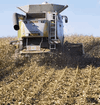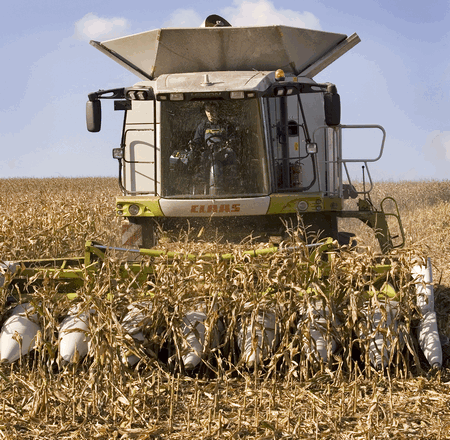Topical agronomy tips for grain maize

Creating the right soil structure so grain maize roots can grow down rapidly and ensure a fast start is critical to the success of the crop, Simon Draper of the Maize Growers Association acknowledges.
It means growers must be careful to avoid compacting soil during drilling, which is getting under way.
“Compaction must be reduced to the bare minimum,” he stresses. Sub-soiling before drilling is often required. “The roots have to be able to grow down rapidly, so that the crop can get going. This simply won’t happen if they hit a pan.”
The seed rate should be lower than that used for forage maize. “Aim for 35,000 seeds per acre, which is 10,000 less than for forage maize. We’re after the grain rather than the bulk, so there needs to be air around each plant.”
Drilling should take place as shallow as possible but into a moist seedbed, he adds. “It’s a big seed which needs moisture to get it to germinate. If the conditions become very dry after drilling, you tend to get poor germination. So drill deeper into moisture if it is dry.”
The deeper you manage to sow, the less bird damage you suffer. “But it takes longer to emerge.”

Top yields depend on getting the maize crop away quickly
Other, less troublesome pests include leatherjackets, wireworms and slugs. Although seed is supplied treated with a fungicidal seed dressing to prevent damping-off, this year is the first that an insecticidal treatment has been available.
“Poncho (clothianidin) can now be applied to the seed, for the control of all the soil pests,” says Mr Draper. “Growers will have to ask for it specifically, and do ensure that it is used up. There are some indications that germination is affected on over-yeared seed.”
While sowing normally starts at the beginning of May, soil temperatures need to have reached 8ºC before the drills can get moving. “So it will probably be a bit later this year.”
The dramatic increase in prices means that using starter fertiliser on the crop won’t be economic this year, he suggests.
“We know that an application of nitrogen and phosphate as a starter fertiliser can speed up crop development and stimulate root growth. But it’s too expensive at the moment.”
The crop’s potash requirement is high, at around 180kg/ha, and can be met with FYM if it’s available. Otherwise, potash needs to be applied prior to drilling.
Pre-emergence herbicide Cadou Star (flufenacet+isoxaflutole) gives the crop a good start by controlling a wide range of broad-leaved and annual grass weeds.
“It was introduced last year and has worked well. Best results come when it is applied within four days of drilling.”
Relying on post-emergence sprays is cheaper, but there are more restrictions, he adds.
A disease threat in cold, wet summers is eyespot, which can have a devastating effect on the crop if it gets going, he warns.
“The name is deceptive it’s not the same pathogen which causes eyespot in cereals. But what is similar is that a fungicide has to be applied before the problem becomes apparent, as it works by protectant action.”
This means that spraying has to take place in June, even though the impact of the disease isn’t obvious until September. “We can use Genie (flusilazole) for its control, but it’s worth delaying application for as long as possible to see if it’s warranted.
“Of course, there comes a stage when it’s no longer possible to get the sprayer through the crop.”

